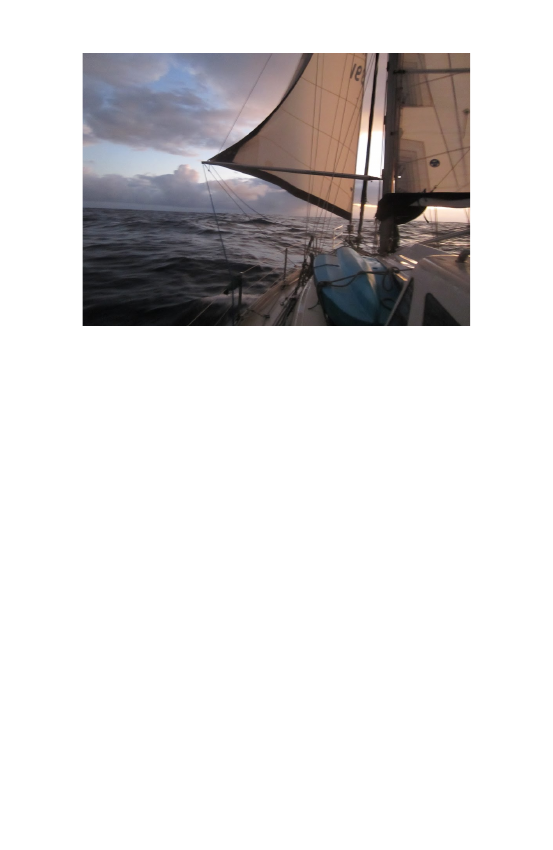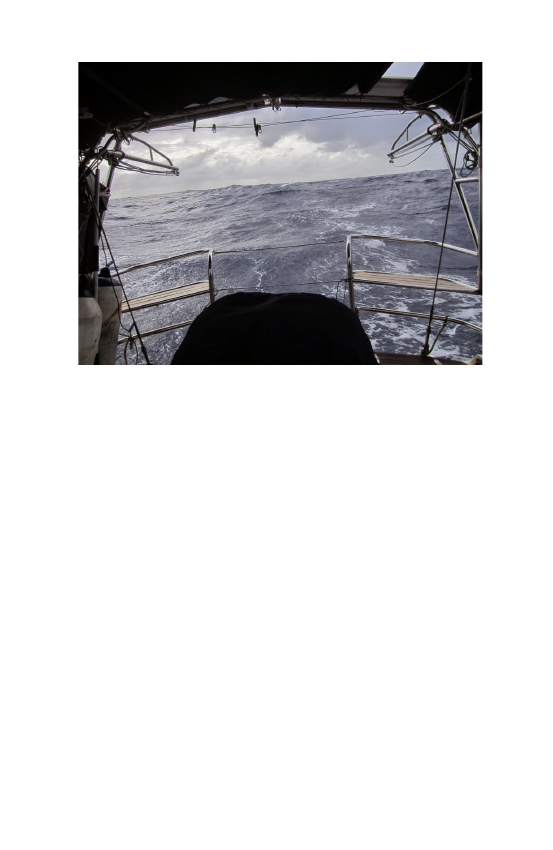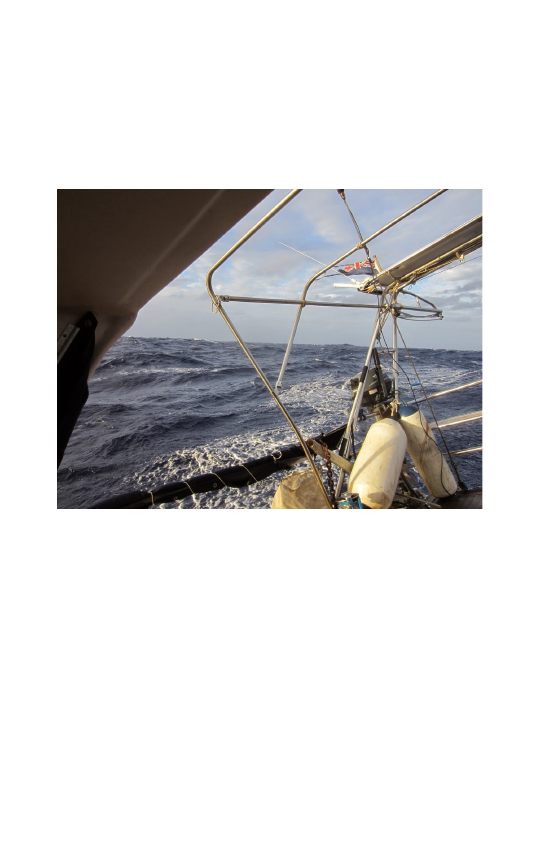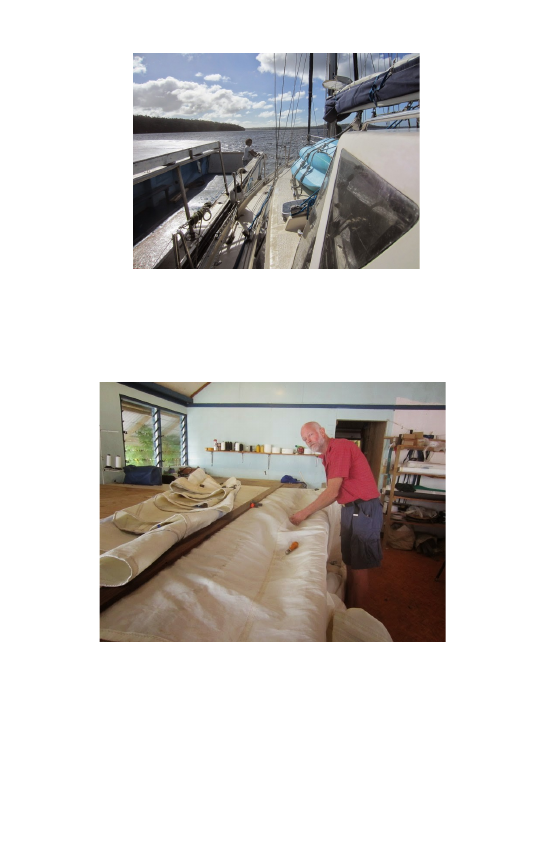
Chapter 3 Pacific Storm 2014
Introduction
Crossing the Pacific on the way home after five
years in the Mediterranean and two years in the
Caribbean and USA, I was expecting an easy
run.
I had a flat sea almost all the way from Cape
Hatteras to Cuba and then an easy passage
through the Panama Canal and on to the
Galápagos. The time there was enjoyable, with
some land travel. The 19-day sail from the
Galápagos to the Marquesas Islands, with winds
between 12 to 18 knots, was every single-
handed sailor's dream cruise. Warm, moderate
winds always behind the beam.
French Polynesia is the world's best cruising
ground, with protected atolls, clear water, and
wonderful drift dives through the channels.
Eventually, I had to leave this paradise from
Bora Bora and head on to Tonga to reach home.
Not only did I leave in a rush due to
bureaucratic pressures, but I also left knowing I
was heading into unsettled weather as I moved
from the calm areas around the equator towards
1

the tropical latitudes and the Southern Ocean
further south.
What happened on this leg wasn't in the plan, and
the impact and consequences have had lasting
maintenance repercussions that I didn't uncover at
the time. Here's the story of this storm.
The Storm
Malua left French Polynesia after some difficulty
with my crew member who did not want to leave
Bora Bora. I left her in the hands of the local
Gendarme and set sail out into a very unsettled
weather system. I had no option but to leave,
so off I went. After two days, the main engine
started to give problems. It was either water in
the fuel or the fuel was contaminated. The end
result was I could run the engine to charge the
batteries but not move the boat forward. Not a
big deal in a sailing boat; however, there was no
wind, so I just sat and waited.
2

Be careful what you wish for.
On the third day out, at dusk, the wind started
to rise. By midnight, I watched as the wind rose
from right astern, first 20 knots - OK, put in one
reef; then 25 - OK, put in the second reef and
furl the genoa; then 35 - well, it can't go much
higher. The boat was now doing 8 to 10 knots
downwind.
3

This is where single-hander lethargy sets in.
You do nothing either because you're tired or
you think it will get better. When the wind was
at 40 knots, I decided to take the third reef in
but did not move from my captain's chair. It
was then the wind rose to 45 and then 47 knots
and BANG - the sail tore between the second
and third reef points. Now there was no option
but to take the torn sail down.
I stepped up into the cockpit and started to
move forward when a large wave washed all
over the port side of the boat. Time to clip onto
the lifelines, turn all the outside lights on, and
4

secure the sail. Not a difficult job because Malua
was still running before the wind and waves.
The autopilot was handling the situation well.
When the sail was secure, I only had a small
furled staysail out, and Malua was still doing 5 to
6 knots along the rhumb line to Tonga - 6 days
away.
I slept well the rest of the night, but by morning,
the seas from east of New Zealand had built to a
massive 5 to 6 meters. Thankfully, they were
quite ordered and pushing me in the right
direction.
That afternoon, while I was in the captain's chair
at the nav station, the boat was slammed over
to the starboard side by a huge wave. The
dorade vent over the stove started to flood
water, and I found myself on my side
underneath a waterfall of seawater coming
through the closed companionway hatch. Before
I realised what had happened, Malua had righted
herself, and I was drenched through.
There was water everywhere with about 2 inches
over the floor.
I set about getting rid of the water by sweeping
it into the bilge. Days later, I was to find the
batteries swimming in a sea of water in their
5

purpose-built battery compartment. I would find
water everywhere in the aft section of Malua.
My quarter berth was wet, as were things on the
chart table. The final water damage would be
revealed days later.
I then realised that there was something
flapping in the cockpit. I opened the
companionway and looked out to find all the
canvas from the bimini and weather cloths
ripped to pieces. The two fenders secured at the
stern had gone. The stern anchor tied to the
lifeline was over the side, attached to the boat at
the end of the anchor chain. The life recovery
ring was trailing astern on its line. All the sheets
6

and lines kept in the cockpit and under the hard
dodger were somewhere else. It was a mess.
Luckily it was light, so I set about retrieving the
things trailing overboard and securing the other
lines in their correct place.
I was to find out later that the engine fan vent
located in the cockpit had been flooded along
with the large cockpit locker containing one
outboard engine. The other on the rail had had
a good seawater submersion.
What could I do? Just run before the wind with
only the small furled staysail to give me
direction and drive. Five days later, I was off the
northern tip of Tonga, hoping for a tow into the
harbour by one of my friends. I contacted them
on the HF radio, but they could not or would not
give me a tow into the narrow entrance to the
port of Neiafu on the northernmost island of
Tonga. You soon find out who your friends really
are.
7

I organised a commercial tow into the harbour,
cleared in, and took a mooring buoy in Neiafu
harbour. I had been here before in 2004.
Relieved that I had made it to a place where I
could get the engine fixed and repair the sail.
The next chapter occurred a few years later.
No magical moment on Malua here.
8







